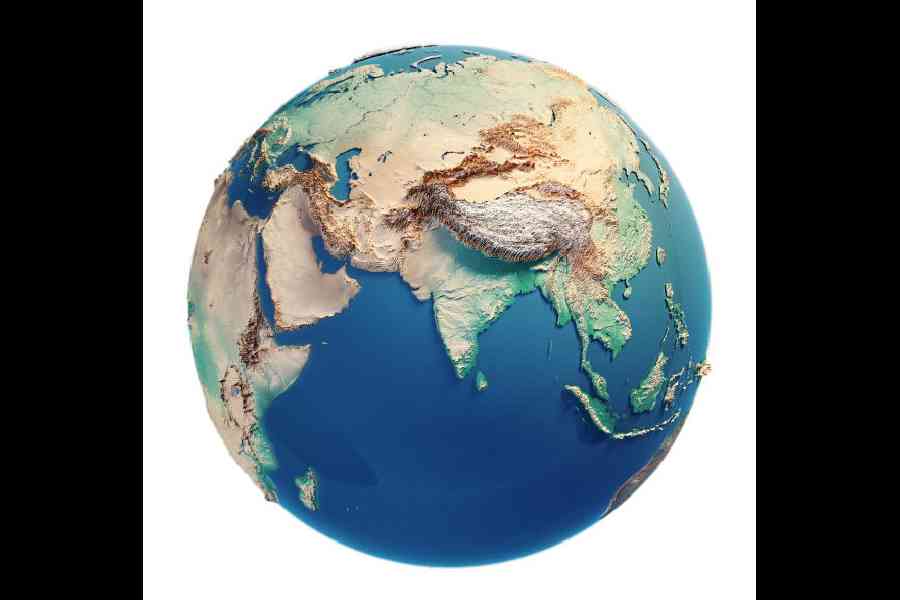The world is split up into continents,
there are seven in all
And if you get the gist,
we’re going to make a list,
From biggest to small …
Your kids may have come home from school singing this infectious ditty, or another like it. But are there really seven continents?
Hiding within the simplicity of the song, there is an illusion of general agreement about the number of continents.
The dispute arises in part because there are really two types of continents: those recognised by cultures around the world, and those recognised by geologists.
Geologically speaking, to be a continent, a bit of the planet needs to have four things:
— A high elevation relative to the ocean floor.
— A wide range of igneous, metamorphic and sedimentary rocks rich in silica.
— A crust thicker than the surrounding oceanic crust.
— Well-defined limits around a large enough area.
“Anything big enough to change the map of the world is important,” said Nick Mortimer, a geologist with the New Zealand government-owned GNS Science research institute. “Labelling and identifying part of the Earth as a continent, even a small, thin and submerged one, is more informative than just leaving a map blank.”
This creates problems for numbering continents.
Consider Iceland, which sits atop a rift that stretches around Earth, the Atlantic branch of the mid-oceanic ridge. Volcanic activity there slowly separates the tectonic plates on which North America and Europe rest. Most of the ridge lies deep beneath the ocean. But in Iceland, it sits above sea level.
Another enigma is that the volcanoes there often spit out lava made of molten continental crust, even though Iceland is thousands of miles from any continents. Some geologists therefore suspect Iceland is not a lonely island at sea, but actually part of a continent (although as to which one, that can get complicated, too).
That notion finds support off Africa’s eastern coast.
A mid-oceanic ridge in the Red Sea is dividing Africa from Asia. This divorce is happening at the rate at which fingernails grow. Along most of the ridge, the separation is straightforward. But the separation is much messier where the Red Sea meets the Gulf of Aden. In place of an obvious point of thinning where ocean crust is forming, the continental crust between Africa and Asia is splintering into hundreds of pieces. In that location, there is no obvious point where Africa ends and Asia begins.
“It is like very strong and very thick toffee getting stretched out, but not snapping,” said Gillian Foulger, a geologist at Durham University in England.
Valentin Rime, a geologist at the University of Fribourg in Switzerland, and his colleagues recently published a study in the journal Geology showing that Iceland, too, has heavily stretched toffee beneath its surrounding seas. Instead of a clean break between North America and Europe, there appears to be a complex mix of magma and continental crust fragments scattered in a path between the two land masses that runs right through Iceland. Just like the point where the Red Sea and the Gulf of Aden meet, there is no clear point where North America ends and Europe begins.
Of course, if Africa is still attached to Asia through the Gulf of Aden and North America is still attached to Europe, this kind of messes up the “Seven Continents” song. If the crust between these continents is stretching but not snapping, is it well-defined enough to identify the two land masses as separate continents? Or are they still one?
Then there is New Zealand, which really wrecks things for our kids.
Although New Zealand and Australia are often grouped together, they are not on the same continent. While Australia is widely considered to be a continent in its own right, the notion that New Zealand is part of its own continent, Zealandia, is a newer argument.
While few think of Zealandia as a continent in cultural terms, “it is increasingly being recognised as a geological one,” Mortimer said.
But not everyone agrees, and they point to that meddlesome fourth criterion ignored in most textbooks. The crust making up Zealandia is between 10 and 30 kilometers thick, making it thicker than the 7 kilometers of most ocean crust. But it is not as thick as other continents’ crust, typically between 30 and 46 kilometers. This makes the boundaries between Zealandia and the ocean less well defined and more difficult to discern. Size creates issues, too. At 4.9 million square kilometers, the proffered Zealandia is much smaller than Australia, which itself is only 7.7 million square kilometers.
Then there is the fact that Zealandia is mostly submerged. Being above water is not part of the geological definition of a continent, but it does seem to matter culturally, because people are used to thinking of continents as dry land.
Geologists are still arguing what these discoveries about continental and oceanic crust mean for the number of continents. What is certain is that the research is revealing that there is more than one way for two continents to split apart, and that the split is not always clean or even complete.
“There are basically only two major continents,” Rime said. “Antarctica and everything else, since South America is connected to North America through Panama, North America is connected to Asia through the Bering Strait, and Asia is connected to Europe, Africa and Australia through the Urals, the Sinai and Indonesia, respectively.”
NYTNS











